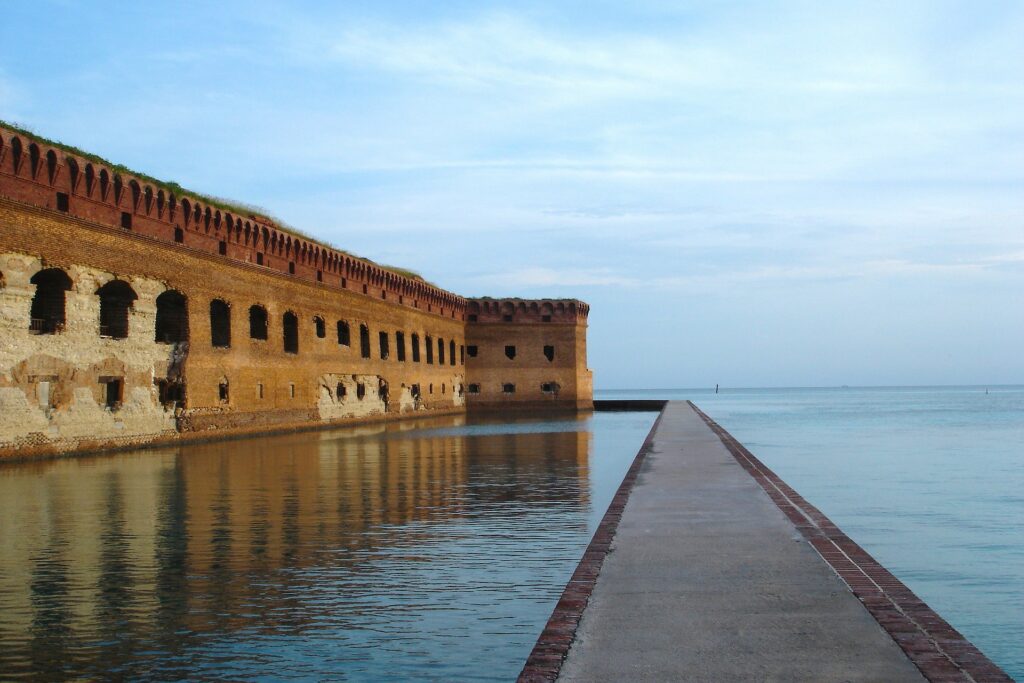
The Ultimate Guide to Camping in Dry Tortugas National Park
- Jennifer Melroy
- Last Modified October 31, 2020
- First Published on October 21, 2019

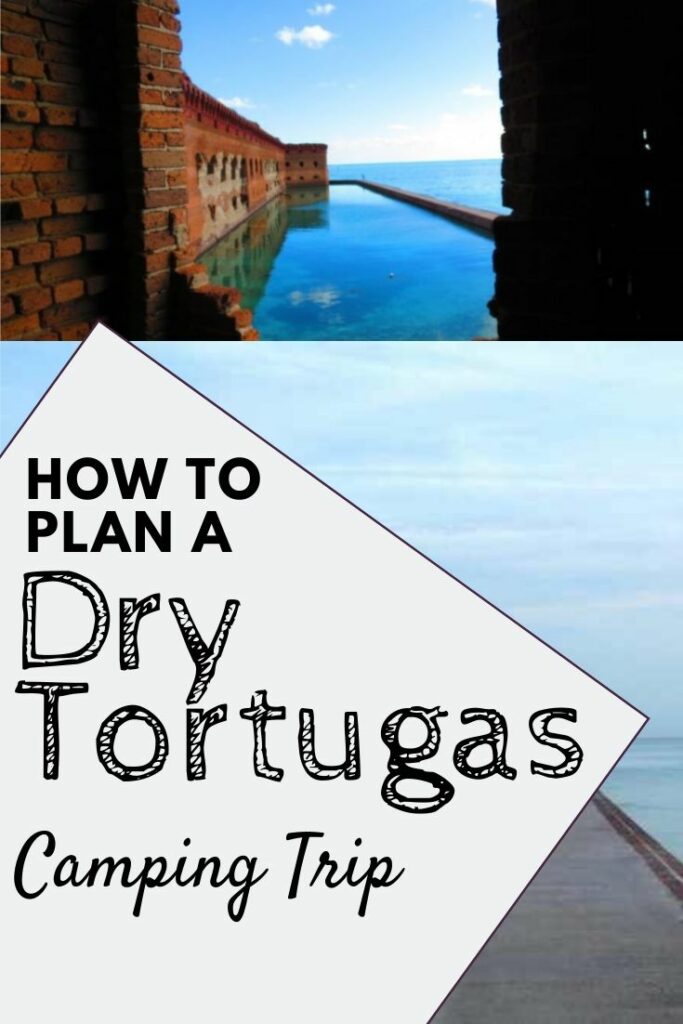
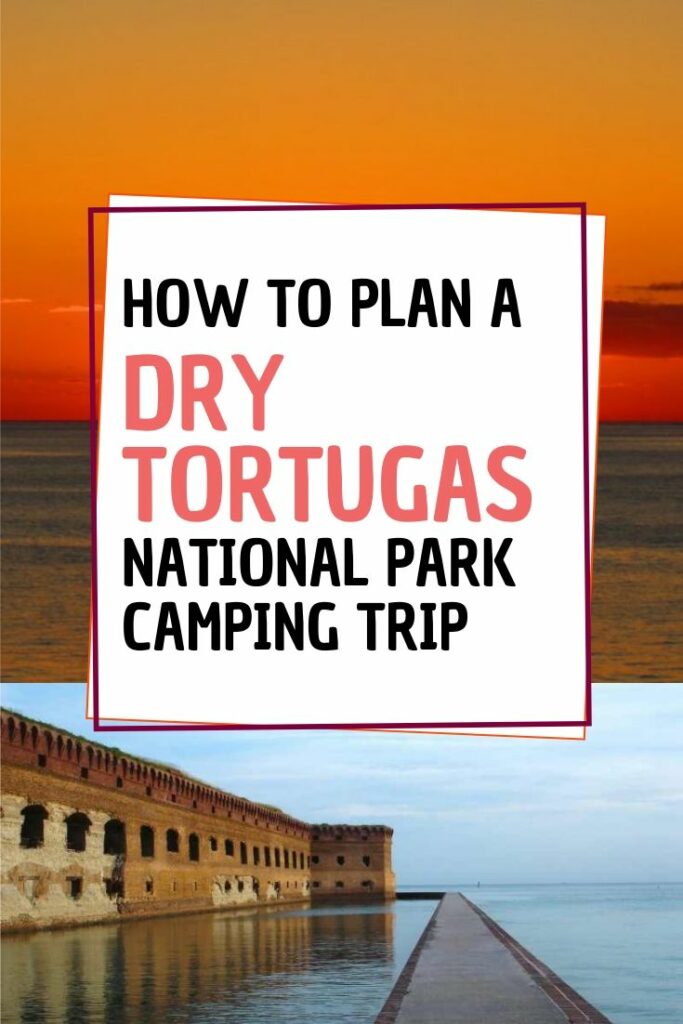
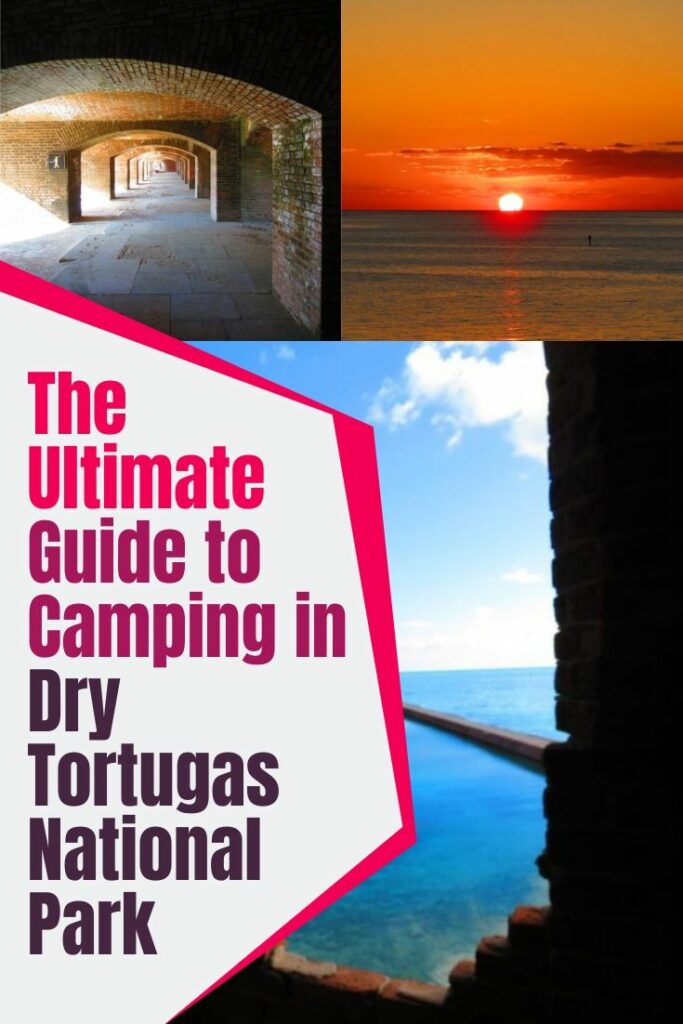
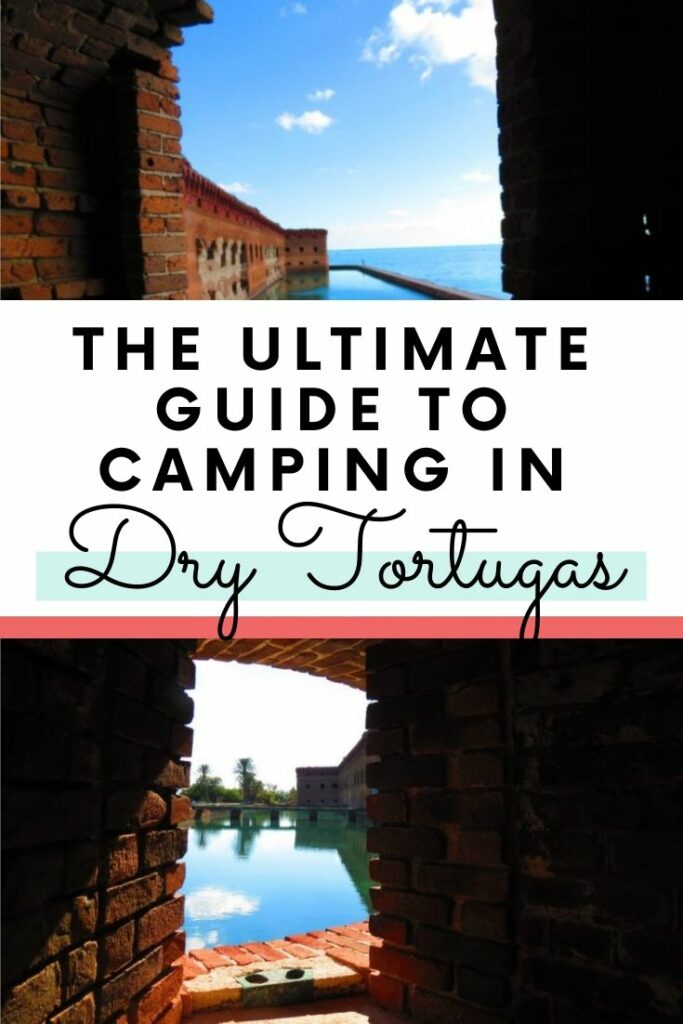
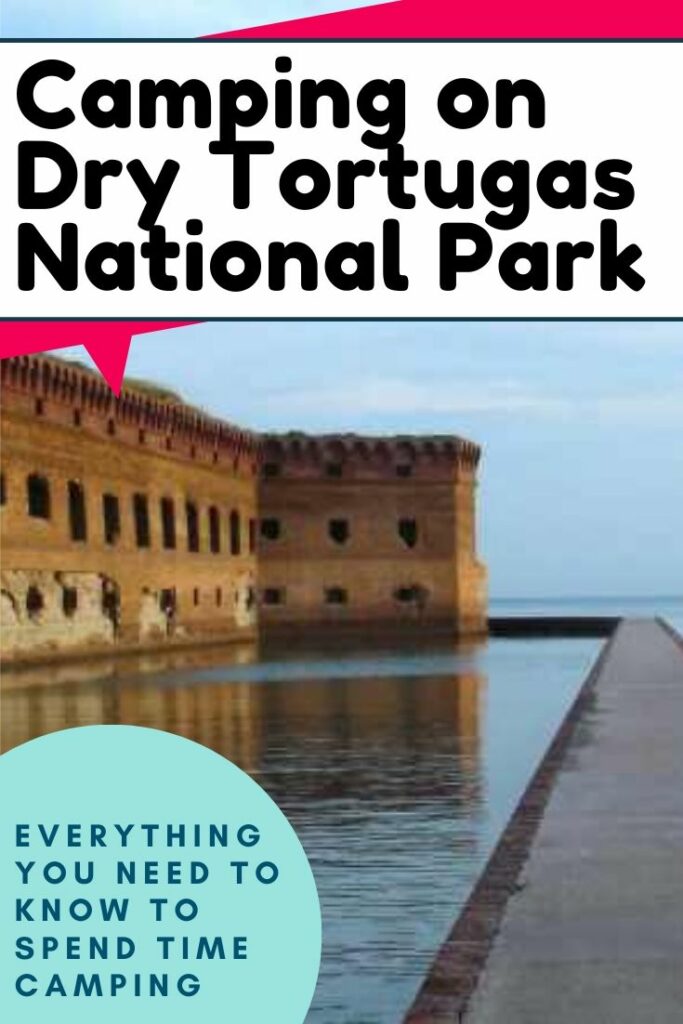
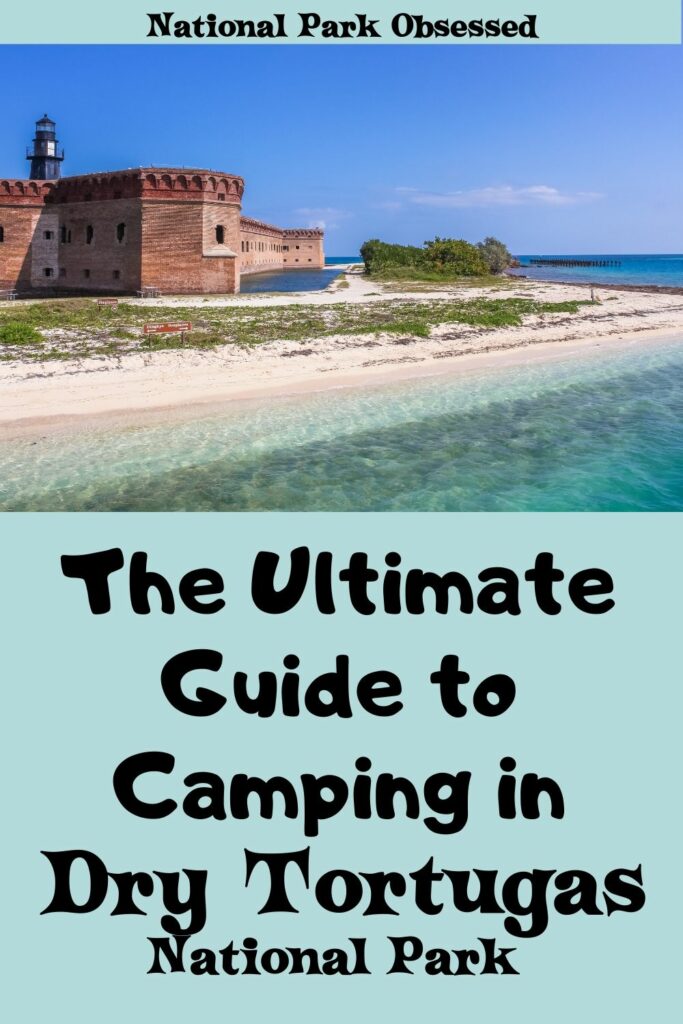
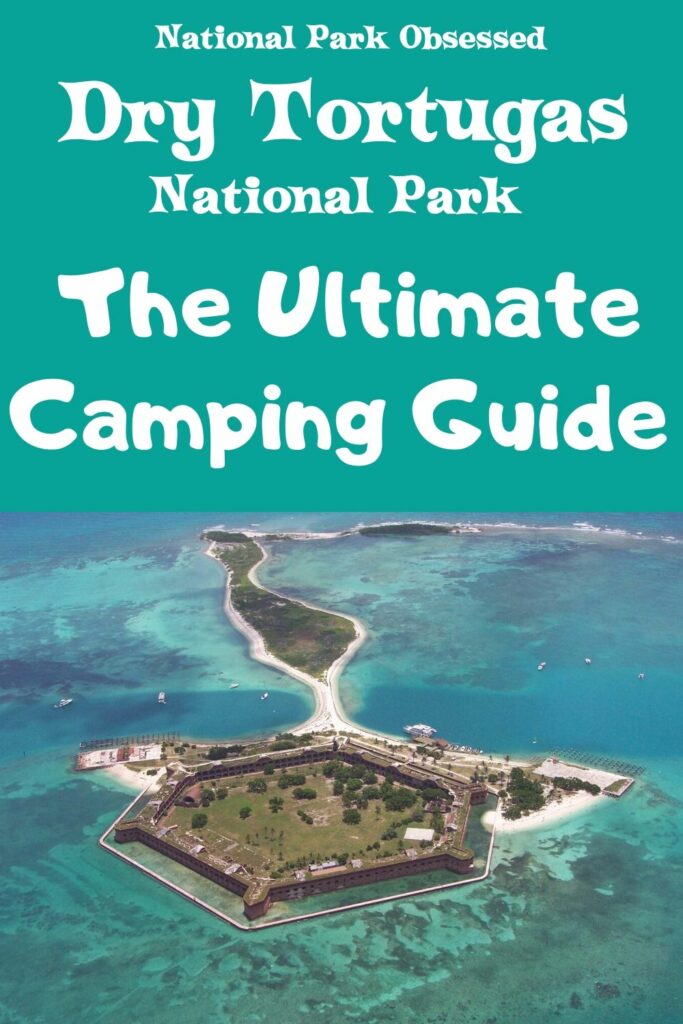
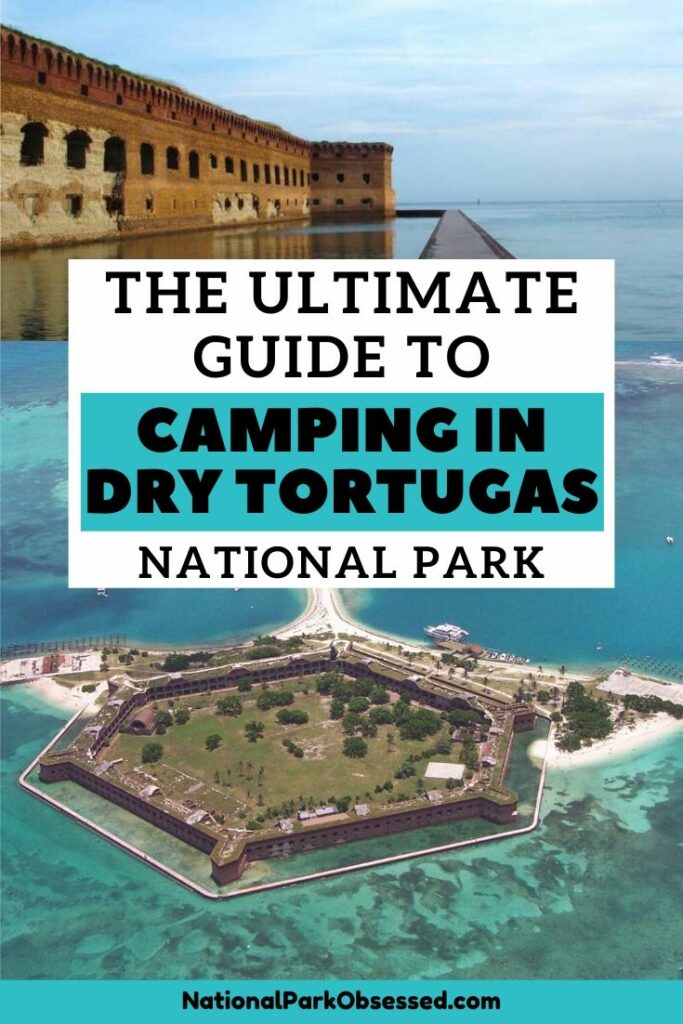

This post may contain affiliate links, meaning if you book or buy something through one of these links, I may earn a small commission at no extra cost to you! Read the full disclosure policy here
Dry Tortugas National Park provides one of the most unique camping experiences in the entire National Park system. The park is about 70 miles west of Key West on a small group of seven islands called the Dry Tortugas. Camping in Dry Tortugas offered on Garden Key in the shadow of the 19th century Fort Jefferson and on a white sand beach with access to incredible snorkeling.
During spring break one year, I took a trip on the Yankee Freedom III to spend 3 days camping on a deserted island in the Gulf of Mexico. The islands lack electricity, cell service, and any sort of hotel, but I have been looking forward to this adventure all semester.
Here is everything you need to know about camping in Dry Tortugas National Park.
Help support this site by purchasing one of our National Park Shirts, Poster, and other gear. Every purchase includes a donation to the national parks and helps keep National Park Obsessed’s website free to use and producing more national park guides.
Looking for more help planning your next adventure? Join the National Park Obsessed Facebook Group here to connect other national park lovers, trade advice, or see inspiring photos of the National Parks?
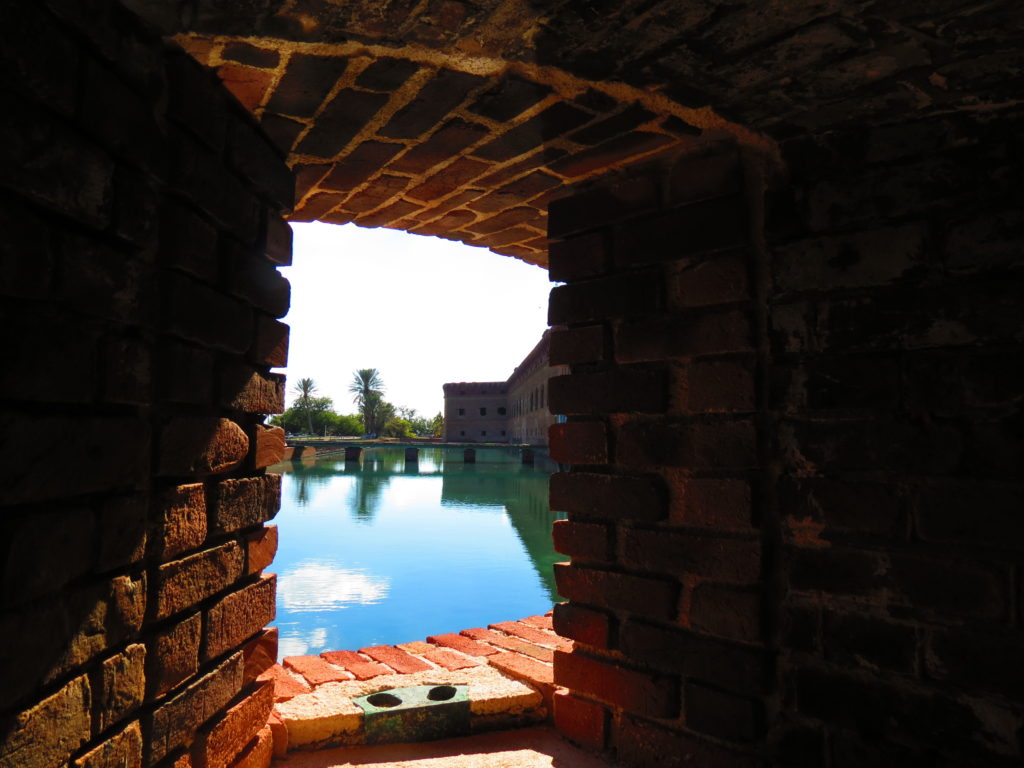
Dry Tortugas Camping
Things to Know about Dry Tortugas Camping
- Camping is available year-round.
- The Garden Key Campground is first-come-first-serve. Overflow camping is available if all the sites are full.
- While the camping is first-come-first-serve, ferry reservations are required. There are 10 camping ferry tickets per day. This helps regulate the number of campers on the island. Campers must call 800-634-0939 to make their reservation. It is possible to take a private boat out to the Dry Tortugas go camping.
- Yankee Freedom Ferry limits camping trips to 4 days (3 nights)
- Reservations have been filling 8-12 months in advance. Book as soon as you can.
- There are no services on Garden Key. Please pack accordingly. Bring all water, food, snacks, and sunscreen with you. Save the park money and protect the wildlife by packing out all trash.
- Plan on at least 1 gallon of drinking water per day. Plus 1 gallon of water for washing per day.
- Please pack reef-friendly sunscreen. Look for the special disclaimer on the packaging. Using regular sunscreen leaches chemicals that have been shown to damage coral reefs.
- Trees
- Keep a clean campsite. This means that all food, utensils, and any scented items in a hard-sided container or on the hang poll. The island has a small population of rats who can chew through tents and soft-sided containers.
- Do NOT attach ANYTHING to the trees and scrubs. This includes ropes, hammocks, tents, laundry lines, or any other material.
Yankee Freedom Ferry Camping Regulations
- Campers must take everything they are going to need with them!
- The ferry only allows is match-light charcoal. NO compressed gas of any kind or liquid fuel is allowed.
- Campers are limited to 60lbs per person (not including water)
- You must be able to lift and carry your gear without help
- Gear must be packed into tote bags or bins– Please do not have a lot of little, loose gear. The cargo area is not protected from rain or spray – pack any water-sensitive gear in waterproof containers.

Getting to Dry Tortugas National Park
It isn’t easy or cheap to get to Dry Tortugas. There are only two ways to get to Dry Tortugas: boat or seaplane.
Key West Seaplane Adventures offers a 4-hours and 8-hour adventures to Dry Tortugas National Park. They do not transport campers to the island. Seaplanes run about $356 per person for a half-day trip.
If you are will and have the skill, you could rent a boat and navigate yourself out there or take your own boat.
For the non-sailors, the only other option is the Yankee Freedom ferry. The ferry is about $180 per person for a day trip and $200 per person for camping trips. This includes the $15 park entrance fee that is refunded if you have an American the Beautiful Pass.
Estimated Drive time to Key West, Florida
- Miami, Florida – 3.75 hours
- Orlando, Florida – 6.5 hours
- Tampa, Florida – 6.75 hours
- Jacksonville, Florida – 8 hours
Where to camp in Dry Tortugas National Park?
Campgrounds in Dry Tortugas National Park
- Garden Key Campground
Dry Tortugas Campground Map
Camping at Dry Tortugas National Park
Garden Key Campground
Garden Key Campground is located on Garden Key in the shadow of Fort Jefferson. The camping is primitive camping with an emphasis on the primitive. The campsites all have a grill and picnic table. There is a small amount of shade provided by the shrubs on the island. All of the regular sites are set in the shrubs and there is some privacy. There is no electricity, no water, and no running toilets.
| Season | Year Around |
| Number of Sites | 10 individual sites & 1 group sites |
| Fee per night | $15 per Night for individual sites $30 per Night for the group site |
| Reservations Available | Sort of – The Yankee Freedom Ferry has limited camper tickets each day and this helps to ensure that camping is available on the island. |
| Max RV Length | No |
| RV Hook-up | No |
| Restrooms | Vault Toilet |
| Water | None |
| Showers | The Ocean |
| Max Length of Stay | 4 Days if arriving via the Yankee Freedom Ferry |
| Wheelchair Accessibility | No |
| Wifi on Property | No |
| Laundry Facilities | No |
| Pets Allowed | Yes, but please review the Dry Tortugas National Park Pet Policy The Yankee Freedom Ferry does not allow pets. |
| Typical Fill Time | Not applicable, overflow camping and campsite sharing is available |
| Closest General Store | Key West |
My Camping Experience in Dry Tortugas
Getting on the Dry Tortugas Ferry
My travel partner and I had an early morning. We had to arrive at the docks several hours before the day trippers. The boat crew needs to get our camping gear loaded before they fueled the boat. We had a couple of hours to hang out by the dock and watch the water in the early morning light.
They need to load the camping gear onto the boat before the fuel the boat. There is a max of 6 campers on the ferry and it can take a while to load coolers, kayaks, and other camping gear.
The Ferry Ride to Fort Jefferson.
The ferry departed on the hour and a half journey to the islands. If you get motion sickness, take Dramamine in the morning when you arrive at the dock. The boat will rock but the level of rocking will depend on the weather and that can vary from calm and chill to the crew gets seasick. Our ride was decent. We have 3-5 ft waves. I do get seasick and the Dramamine worked like a charm as long as I was sitting outside. We spent the ride hanging out on the bow of the boat.
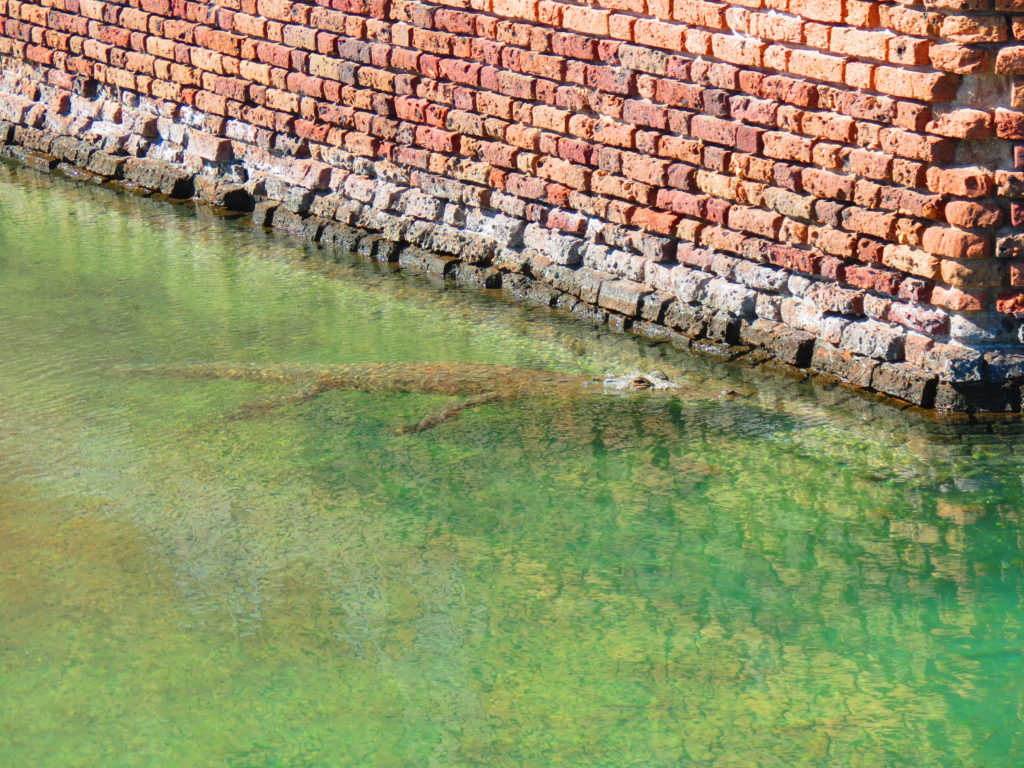
Arrival at Dry Tortugas National Park
The boat docked on the island. The day tripper’s exit the boat to enjoy their three-hour adventure on the island. The small group of campers have to wait until a park ranger arrives for the safety and park rule briefing. The meeting covered the standard stuff like
- Leave No Trace principles
- No attaching or hanging things from trees
- Place all trash in the proper container
- No feeding the wildlife
- Preventing the rats from stealing your food
- Leave your charcoal in the grill, it will be collected in the morning.
- Quiet hours from 10:00pm to 6:00am
- What qualifies as an emergency and is a reason to wake the Rangers up in the middle of the night?
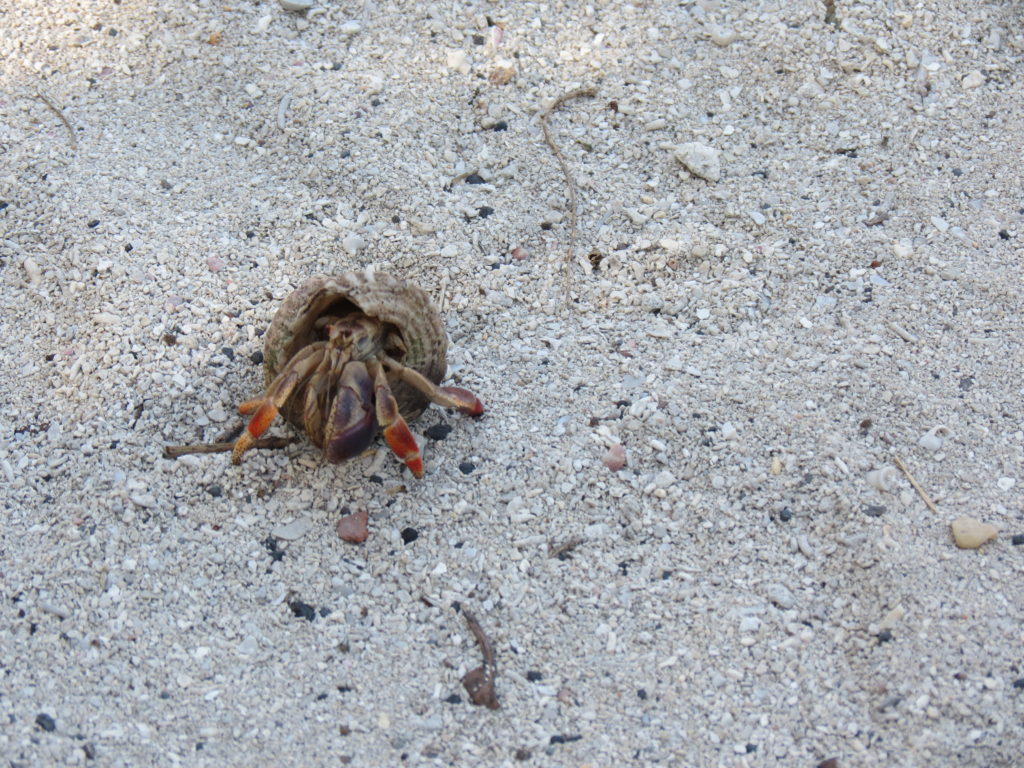
My favorite section was the “What qualifies as an emergency and is a reason to wake the Rangers up in the middle of the night?”
The question caught me by surprise at the time (nowadays, I am not shocked or surprised by these things). Apparently, this has become such an issue that it needs to be discussed with campers.
- Someone needs medical treatment that a band-aid can’t fix ~ Emergency
- Your charcoal will not light ~ Not an Emergency
- The Cubans have landed ~ Emergency
I shared a look with my travel partner. The Cubans have landed. My first thought is that the ranger is joking. He can see the looks on all the campers’ faces and informs us that it isn’t a joke and it happens about once a month or so. ***My next thought “Does this count as dry land and do they get to stay.” I couldn’t resist asking, the answer is YES the Cubans get transported to Key West and released.
*** In 1995, the United States started a unique program for Cubans fleeing Cuba this program was called ‘Wet foot, dry foot.” If they landed in the USA and managed to get to dry land, they were considered political refugees and were given entrance to the United States. If they were caught at sea, they were returned to Cuba. Then-President Obama ended this program in January 2017 and since then very few Cubans have tried to enter the United States via small rafts (or floating bathtubs).
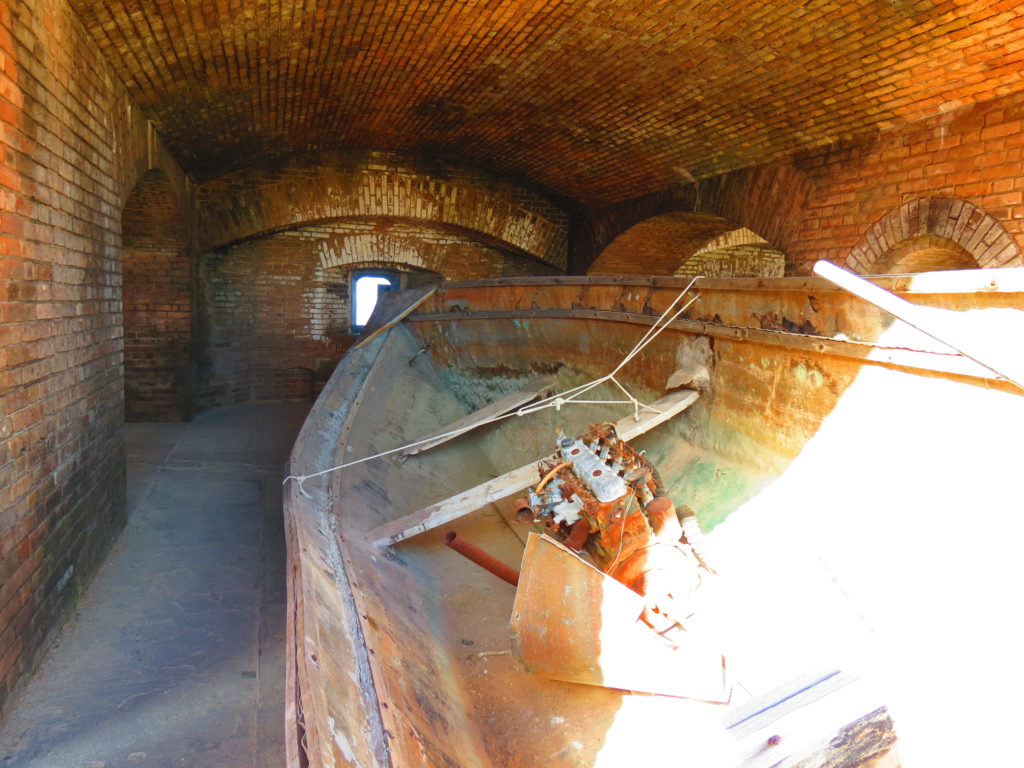
Things to do at Dry Tortugas National Park
Snorkeling
There are several small reefs just off the beaches. They are a nice snorkel. If the wind isn’t blowing, the old piers are great to snorkel in-between the piers. The piers are covered in mussels so if the waves are more than 2 feet, I wouldn’t get to close.
There are some small rock formation about a ¼ mile from the beach which are a nice swim. There aren’t usually currents around the island but that doesn’t mean there aren’t any. Tell someone on shore you are headed out there.
The other great snorkel is to snorkel along the Fort Jefferson sea wall. It has a lot of little creatures on the wall and if you are lucky you might find some moray eels hiding along the wall.
Explore Fort Jefferson
I would wait until 3:30 pm to explore Fort Jefferson. Around 3:30, the ferry leaves taking 95% of the visitors with it. After that, there are usually between 1 and 30 people depending on how many seaplanes visitors and campers are on the island. For our spring break visit, there were about 10 other campers and a couple of rangers.
This is the perfect time to explore Fort Jefferson and get lots of photos without any tourists in them.
The rangers offer a guided tour of the fort about 30 mins after the ferry arrives every day. Check with the rangers for the exact time of the tour. Depending on workload and how nice the rangers are one might be available to give a private tour (or some of the stories not on the tour). Ask nicely when no one else is around for the ghost stories.
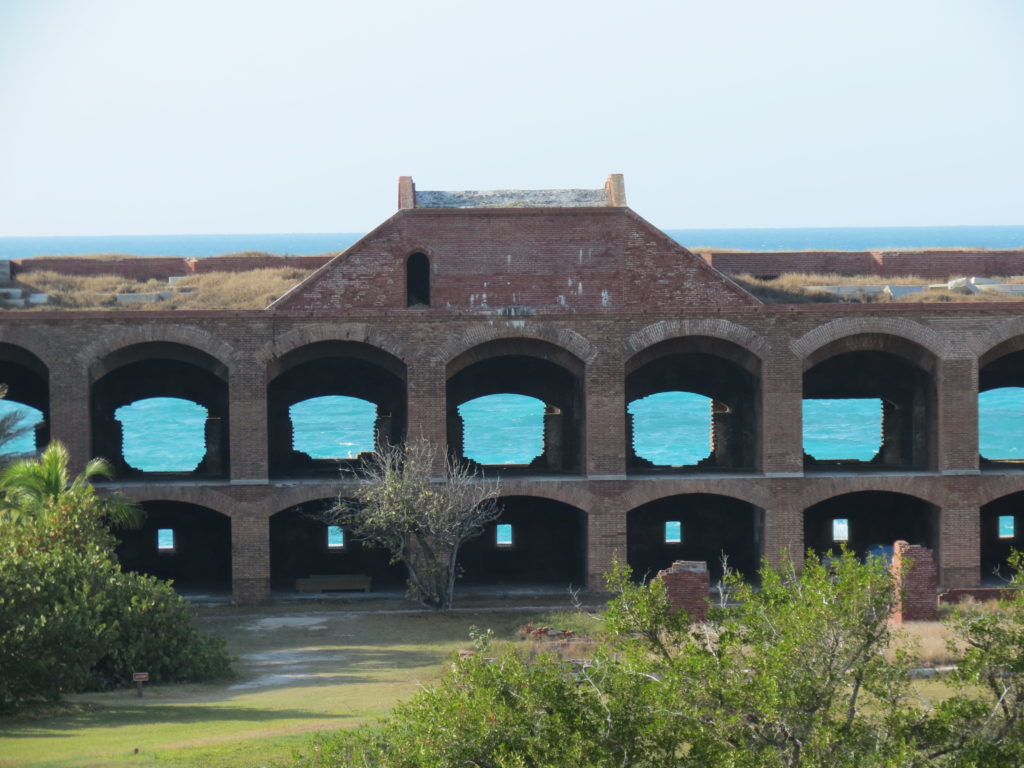
Go Ghost Hunting
Alas, the fort closes at sunset, but Fort Jefferson is supposedly “haunted.” I found this fact out via one of the park rangers.
Earlier in the day, the two engineers (myself and my travel buddy) had noticed a guy with a quadcopter which was odd. Normally drone use is highly restricted in the national parks (they are banned in most parks or you need to apply for a permit).
The park ranger told us that the quadcopter was part of the film crew for Syfy channels’ Haunted Highways show. We could have cared less about the show. We were more interested in the quadcopter. The pilot was very unfriendly and didn’t want to talk to us.
Later that night we got some amazing ghost stories from one of the older rangers. He wasn’t impressed by the ghost hunters there but he had some freaky stories about things he had seen happen.
We spent part of the night wandering along the seawall to see if we could see any ghostly figures wandering around. We didn’t. We did get to follow the ghost hunger around the seawall as filmed. I am pretty sure they used some of us laughing in the final cuts.

Watch the sunset from the ramparts
As sunset approaches find one of the ramparts and set-up to watch the sunset. My favorite spot was on the third tier. You are welcome to stay until the sun drops below the horizon. Once it drops below the horizon, the interior of the fort closes. Be nice to the Park Rangers and don’t make them hunt you down to get you to leave. Take your flashlight with you as there are no lights in the fort and the stairwells can get really dark really fast.
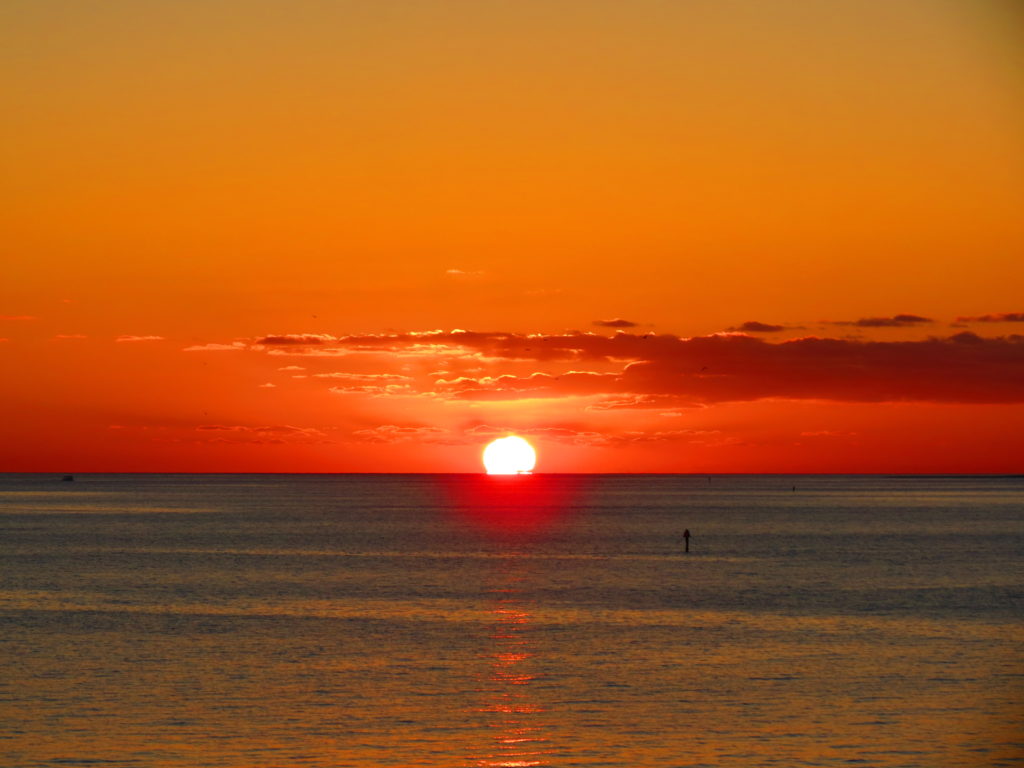
Lobster watching and Conch racing
At night, the lobsters that live in the moat come out. If you use a strong flashlight, you can spot the lobster. If you are really lucky, the American crocodile that lives in the moat will come out and do some hunting. Don’t worry during the day, she hangs out in the moat and isn’t a danger to humans.
One of the rangers had told us, that the moat has lobsters that come out at night. As we walked around the wall we didn’t find many lobsters but we did find a conch on the move. It would use its foot push off the sand and move forward between 6 to 8 inches. All we need was some beer and second conch and we were off to the races.
Keep your eyes peeled and see if you can see any ghostly features inside the fort.
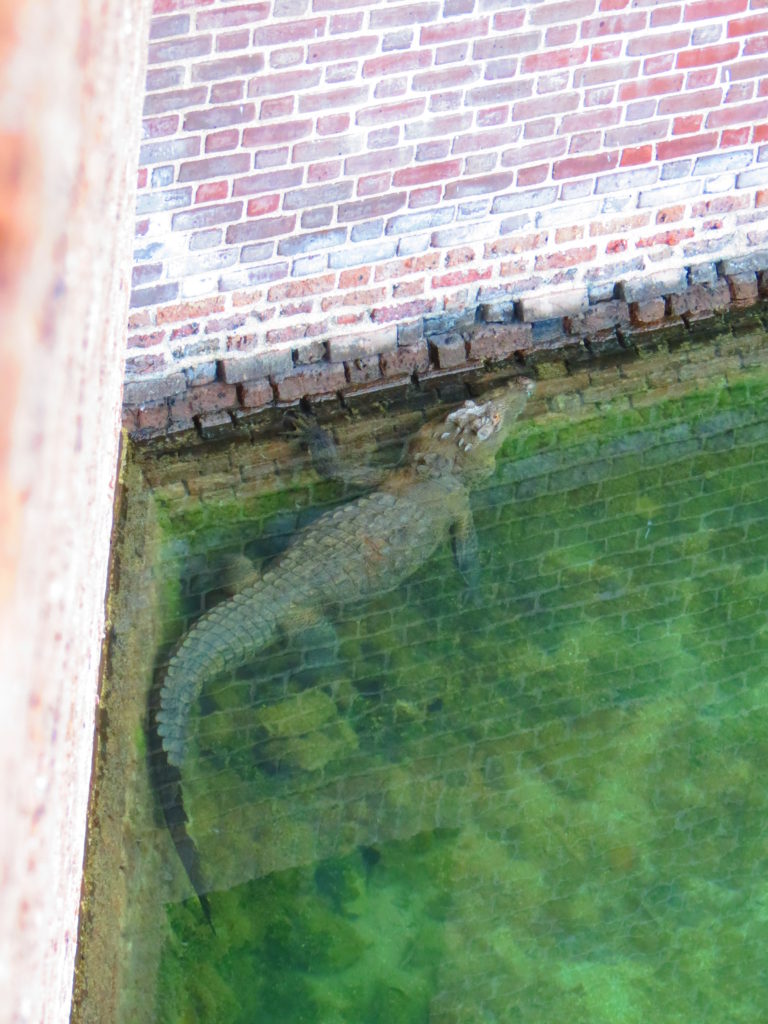
Star Gazing
This trip was long before I had started to develop my star photography skills. There is no light pollution on Dry Tortugas. If it is a cloudless night, the starts are unreal. There are very few places that are better to watch the stars in the United States.
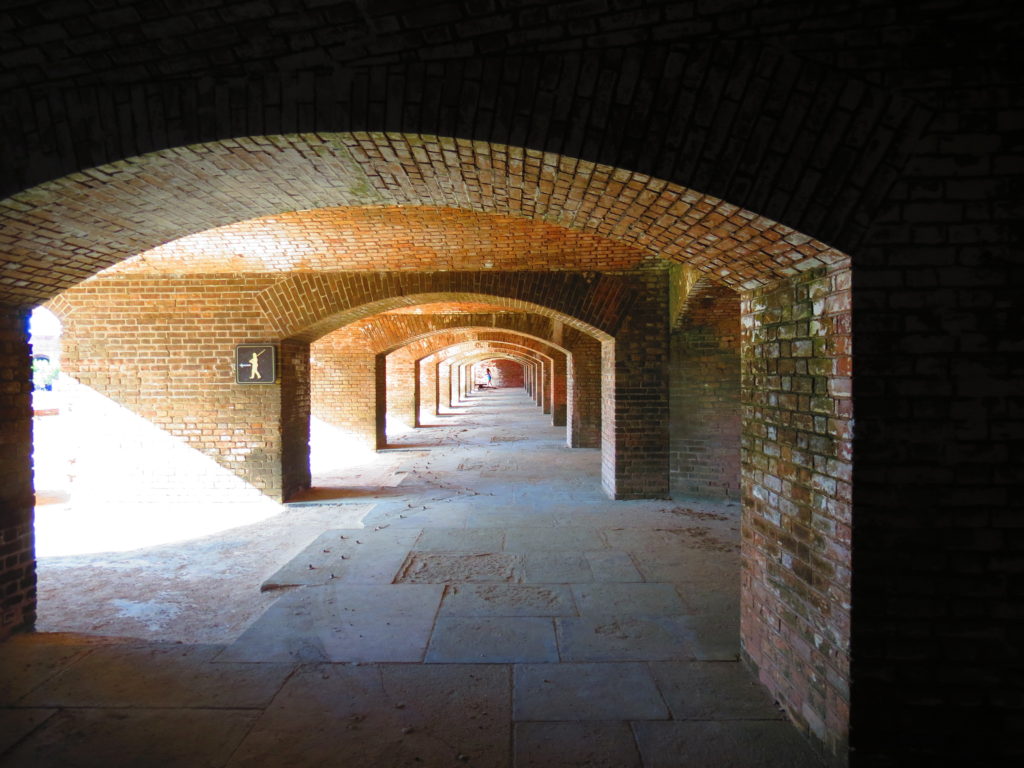
Have you been camping or visited in Dry Tortugas National Park? What was your favorite park? If not, do you want to visit Dry Tortugas National Park?

Jennifer Melroy
Hi, I'm Jennifer!

Welcome to the wonderful world of National Parks. I'm here to help you plan your NEXT amazing adventure through the United States National Parks and beyond. I want the national parks to be accessible to all.
I live in Tennessee, and when I'm home, you can find me hiking in the Smokies and the Cumberland Plateau.
58/63 National Parks
250+/423 National Park Units
Want to know more? Start Here.
ACKNOWLEDGEMENT OF LAND
On this site, we promote travel to the United States and beyond that are the traditional lands of Indigenous and First Nations peoples.
With respect, I make a formal land acknowledgment, extending my appreciation and respect to these lands’ past and present people.
To learn more about the people who call these lands home, I invite you to explore Native Land.
DISCLAIMER
National Park Obsessed assumes no responsibility or liability for any errors or omissions in the content of this site (NationalParkObsessed.com). The information contained in this site is provided with no guarantees of completeness, accuracy, usefulness or timeliness. You are encouraged to conduct your own due diligence before acting on the information provided on this site and should not rely on the opinions expressed here.
There is an inherent risk in all outdoor recreation activities, the reader assumes all responsibility for their own personal safety.
DISCLOSURE
We are a participant in the Amazon Services LLC Associates Program, an affiliate program designed to provide a means for us to earn fees by linking to Amazon.com and affiliated sites.
Privacy Policy • About Us • Contact
Select stock photography provided depositphotos
Copyright ©2023 National Park Obsessed, LLC
Last Updated on 31 Oct 2020 by Jennifer Melroy



